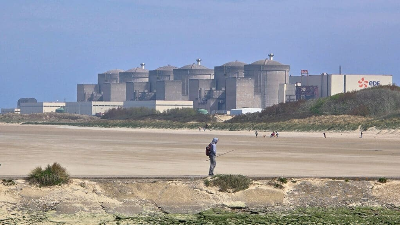
© https://top.vlaanderen
Гравленська АЕС на півночі Франції — була повністю зупинена через “масову і непередбачувану” появу медуз у насосних станціях, які використовують для охолодження реакторів. Про це повідомила компанія EDF. Автоматичне відключення торкнулося трьох блоків через те, що фільтрувальні системи насосів заблокували тисячі медуз, які проникли до порту Дюнкерка, звідки станція бере воду. Інші два енергоблоки на момент інциденту проходили планове технічне обслуговування, тому станція наразі тимчасово не виробляє електроенергію. За словами представників Агенції з ядерної безпеки Франції, цей випадок не становить загрози, адже для таких ситуацій у Гравлені передбачені спеціальні процедури з очищення фільтрів від морських організмів — медуз і водоростей. Гравленська АЕС, розташована на узбережжі Північного моря, має шість реакторів потужністю по 900 МВт кожен і є найбільшою в Західній Європі. До 2040 року на її базі планують побудувати два нових реактори EPR2 потужністю по 1600 МВт. Медузи виду Rhizostoma octopus, що викликали проблему, зазвичай не можуть активно пересуватися і потрапляють у прибережні води разом із течіями. Протягом останніх років кількість медуз у Північному морі зростає через глобальне потепління, надмірний вилов риби та зниження чисельності їхніх природних ворогів. Фахівці зазначають, що масове скупчення медуз уздовж узбережжя півночі Франції є сезонним і регулярним явищем, що посилюється через зміну клімату. Ця ситуація — рідкісний, але не унікальний випадок: подібні проблеми виникали раніше у США, Швеції, Японії та Великій Британії.
Jellyfish halt operations at Western Europe’s largest nuclear power plant
The Gravelines Nuclear Power Plant in northern France was completely shut down due to a “massive and unpredictable” influx of jellyfish into its pumping stations, which are used to cool the reactors. The news was confirmed by the EDF company. The automatic shutdown affected three reactor units after thousands of jellyfish clogged the pump filtration systems, having drifted into the port of Dunkirk, from which the plant draws its cooling water. Two other reactor units were undergoing scheduled maintenance at the time of the incident, meaning the plant is currently not producing electricity. According to the French Nuclear Safety Authority, the incident poses no danger, as Gravelines has established procedures for such situations to clear filters from marine organisms — jellyfish and algae. Gravelines NPP, located on the shore of the North Sea, has six pressurized water reactors with a capacity of 900 MW each, making it the largest in Western Europe. By 2040, the site is expected to host two new EPR2 reactors with a capacity of 1,600 MW each. The jellyfish responsible for the disruption — Rhizostoma octopus — generally cannot swim actively and are carried into coastal waters by currents. In recent years, the number of jellyfish in the North Sea has been increasing due to global warming, overfishing, and the decline of their natural predators. Experts note that large jellyfish swarms along the northern coast of France are a seasonal and recurring phenomenon, intensified by climate change. While rare, such incidents are not unprecedented: similar problems have occurred in the United States, Sweden, Japan, and the United Kingdom.

©
1499